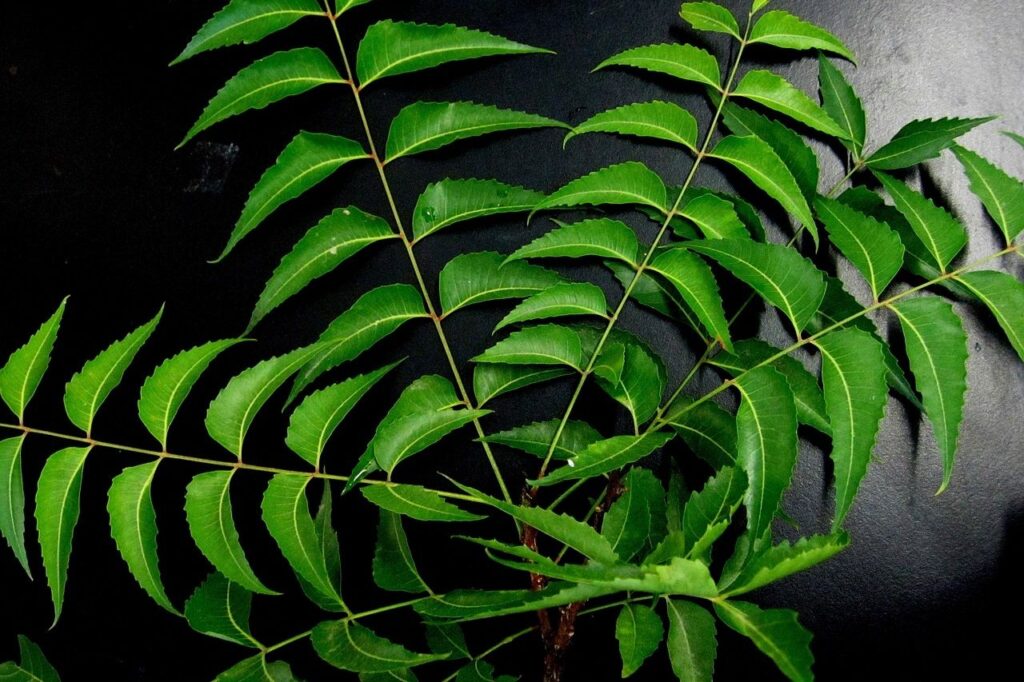Summer has arrived, bringing with it intense heat. This heat increases the chances of developing skin problems like itching, abscesses, and even smallpox-like diseases.
Surprisingly, during this time, the neem tree stands tall, offering a cool refuge for both the body and eyes. Its beautiful blooms are a treasure trove of medicinal properties!
Most people in Tamil Nadu are familiar with neem’s benefits. There are actually several plants with “neem” in their names, such as Nilavembu, Malai vembu, Kari vembu, Sivanar vembu, and Sakkarai vembu.
Today, we’ll focus on the common neem tree. All parts of this tree, including the leaves, bark, flowers, roots, fruits, seeds, and resins, have medicinal properties.
Scientific Breakdown of Neem
Botanical Name: Azadirachta indica
Family: Meliaceae
Chemical Compounds: Alkaloids, Paraisine, Margosine, Aziridine


Neem’s Medicinal Properties
Research shows that neem contains compounds called triterpenes and tetranortriterpenoids, which have various health benefits. Studies have found neem to be effective against:
Scabies, ringworm, and eczema (leaf extract)
Intestinal worms (leaf extract)
Bacterial infections (neem oil)
Inflammation (neem oil, nimbin, and nimbidin)
Pain and fever (nimbidin)
Stomach ulcers (nimbidin)
Diabetes (neem oil)
Traditional Uses of Neem
Neem leaves are traditionally used to treat various ailments, including:
Stomach worms
Leprosy
Scabies
Typhoid
Smallpox
Eczema
Jaundice
கிருமிகுட்ட மாந்தங் கெடுவிடஞ்சு ரங்கள் பொருமியம சூரிகையின் புண்கள் – ஒருமிக்க நிம்பத் திலையிருக்க நீடுலகில் நீங்காமல்
கம்பத் திலையிருக்கக் காண் said agasthiar guna vagadam book.
Neem leaves can also be used for wound healing after childbirth. While neem is bitter, it helps remove excess bile and improve digestion. They are beneficial for the eyes, promote Vata and reduce Pitta.
Neem Remedies
Here are some traditional neem remedies:
- For general health: The neem bud and mature leaf should be crushed together. To the powder, add half the quantity of omam seeds and salt, and grind it all together. Consume this mixture on an auspicious day. Just as performing a ritual for the Trimurti (Brahma, Vishnu, and Shiva) removes all obstacles, this remedy will remove all diseases.. It also cures diarrhea, leucorrhea, and tumors. This is one of the traditional medicinal remedies..
- For children’s ailments: Take neem leaves, omam,pepper, garlic, dry ginger, nochi kolunthu curry leaves, sombu, chitarathai and salt. Except for salt, fry each ingredient separately in ghee. Finally, add salt and grind the mixture into a fine paste without adding water. It should have the consistency of wax.For children, take 65-260 mg of the paste based on their age and mix it with water to feed them. This will cure vomiting, stomach pain, chest congestion, and increase appetite. It also kills intestinal worms and promotes digestion.
- For smallpox: Grind neem leaves and குன்றிமணி (Croton tiglium) root powder together. You can add 2-3 drops of water if needed. Give 130-200 mg of this mixture three times a day to cure even severe smallpox.This potent remedy should only be used under the guidance of a qualified practitioner.
- For skin conditions: Grind neem leaves alone or with a little turmeric and hot water. Apply this paste on a cloth and place it on the affected area to cure scabies, eczema, ringworm, smallpox sores, and other skin diseases. You can add rice flour if there is irritation.
- For wounds and swelling: Grind neem leaves with water and apply it like a paste on the affected area to cure swelling, chronic wounds.
- For abscesses: Apply a paste of neem leaves to help abscesses ripen faster.
Other Uses of Neem
- Neem gum: Added to decoctions for fever and worms.
- Neem flowers: Used to treat fainting, dry mouth, and intestinal worms.
- Soaking the flowers in water and drinking the decoction can cure weakness and jaundice.
- Neem fruit: Dry the neem fruit, remove the seeds, and grind it into a powder. 2-8 grams of this powder twice daily to cure malaria and strengthen the body.
- Neem oil: Applying neem oil can cure various types of flatulence, ringworm, scabies, shingles, fever, and diarrhea. However, it may increase heat in the body.
- The juice of fresh leaves if karisalai, mixed with neem oil, applied locally, promotes hair growth.
- Neem Resin: Drinking neem resin mixed with water can cure leprosy.
- Soaking neem resin and consuming one ounce of the clear liquid three times a day can cure diarrhea.
Neem in Siddha Medicine
Neem extracts are used in some siddha medicines, such as:
Nimbaadi Churnam: For ringworm, eczema, and rheumatic conditions.
Nimbaadi Taila: As an antimicrobial agent for wounds and skin diseases.
Naaraayana Taila: A massage oil for arthritis and other conditions.
Sivanar Vembu Kuzhi Thailam: For local application on weeping eczema, leprosy, and chronic ulcers.
The Power of Neem
Neem is a truly remarkable tree, with all its parts offering benefits for people of all ages. By planting and caring for neem trees, we can breathe cleaner air and enjoy the many health advantages this wonderous tree provides.


Conclusion
The neem tree is a valuable resource with various medicinal properties. However, it’s important to use it safely and responsibly.
Note: The content given in this article is purely meant for information and education purposes only. Kindly consult a Siddha physician before any sort of self medication. Especially for children and pregnant women.


Dr. Augastina B.S.M.S., PGDY, is a passionate Siddha Doctor with a heart of gold. She believes in healing one step at a time. In her writing, you’ll find not just knowledge, but genuine care and a holistic approach to health and well-being.

